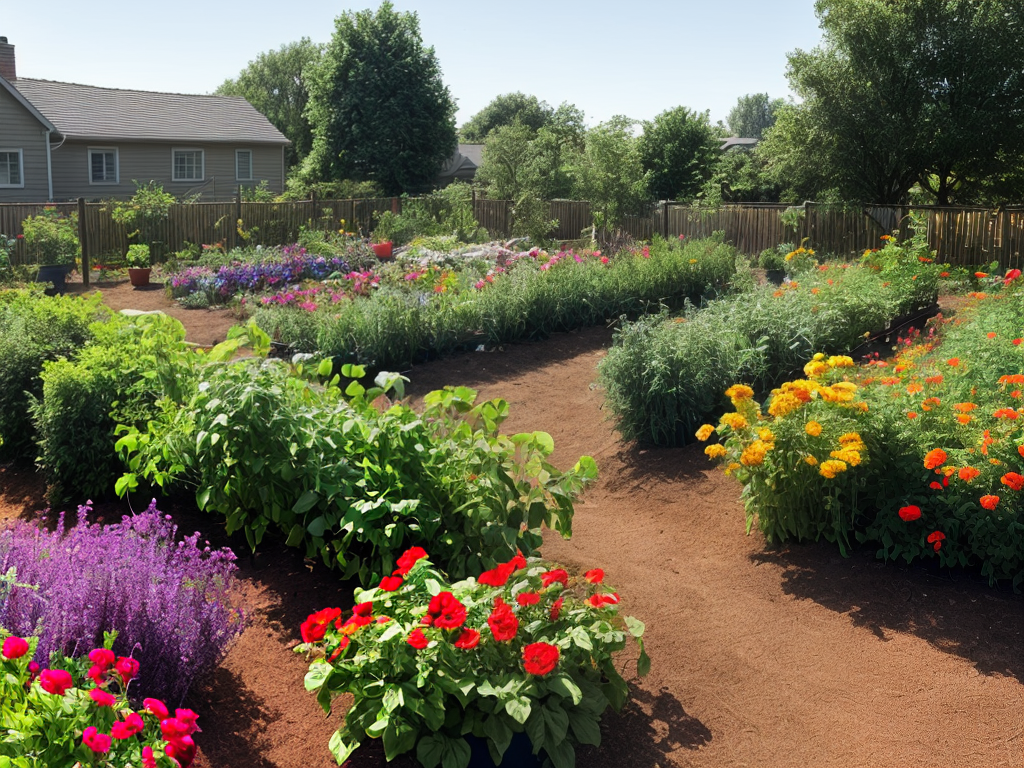
I know, summer can be busy, and the idea of starting a vegetable garden might seem overwhelming. However, with a well-thought-out plan in place, it can be a rewarding and manageable experience. From selecting the right vegetables to understanding how to maintain and harvest your produce efficiently, each step plays a vital role in the success of your garden. So, let’s explore how to create a comprehensive summer vegetable garden plan that maximizes your yield and minimizes stress.
Choosing the Right Vegetables
What vegetables are best suited for your summer garden? When planning your summer vegetable garden, it’s essential to consider the soil preparation and nutrient balance needed for optimal growth. Vegetables like tomatoes, cucumbers, and peppers thrive in well-draining soil rich in organic matter. Ensuring your soil is nutrient-rich before planting will set the foundation for a successful harvest.
Another crucial aspect to consider is succession planting and staggered harvests. By planting vegetables in succession, you can enjoy a continuous harvest throughout the summer months. For example, planting quick-growing crops like radishes between slower-growing plants allows you to maximize space and productivity in your garden. Staggering your plantings of vegetables like zucchini can prevent a glut of produce all at once, ensuring a more manageable harvest.
Assessing Garden Space and Sunlight
When assessing garden space and sunlight for your summer vegetable garden, prioritize locating areas that receive at least six hours of direct sunlight daily. Proper sunlight exposure is crucial for the healthy growth of your vegetables. Conduct a shade assessment to understand how sunlight moves across your garden throughout the day. Below is a table to help you plan your garden space effectively:
| Aspect | Morning | Afternoon |
|---|---|---|
| North | Sunny | Partial Shade |
| South | Sunny | Sunny |
| East | Partial Shade | Sunny |
Planning Watering and Maintenance
Considering the watering and maintenance needs of your summer vegetable garden is essential for ensuring the health and productivity of your plants. Establishing a consistent watering schedule is crucial to prevent under or over-watering, which can harm your crops. Drip irrigation systems are efficient and help deliver water directly to the roots, promoting optimal growth while conserving water.
In terms of maintenance tasks, regular pruning is key to encourage proper air circulation and sunlight exposure, leading to healthier plants. By removing dead or diseased branches, you can prevent the spread of diseases and pests. Additionally, pruning techniques vary among different vegetable types, so it’s important to research and apply the appropriate methods for each plant in your garden.
To maintain a thriving summer vegetable garden, staying on top of watering and maintenance tasks is vital. By implementing a suitable watering schedule and practicing proper pruning techniques, you can ensure that your plants flourish throughout the season.
Creating a Planting Schedule
Establishing a strategic planting schedule is crucial for maximizing the yield and success of your summer vegetable garden. To start, ensure your soil preparation is thorough. Optimal planting times vary depending on the region and the specific vegetables you plan to grow. Research the best planting times for your area to avoid potential pitfalls.
Seasonal succession and crop rotation are essential components of a well-thought-out planting schedule. By staggering your plantings, you can ensure a continuous harvest throughout the season. Additionally, practicing crop rotation helps prevent soil depletion and minimizes pest and disease issues.
Consider the maturity dates of your chosen vegetables and plan your planting schedule accordingly. Group together plants that have similar needs for sunlight, water, and nutrients to streamline maintenance tasks.
Adapting your planting schedule to fit your garden’s unique needs will help you achieve a bountiful harvest. With proper planning and attention to detail, your summer vegetable garden can flourish throughout the season.
Implementing Companion Planting Strategies
To enhance the health and productivity of your summer vegetable garden, incorporating companion planting strategies is a wise practice. Crop rotation is a fundamental companion planting technique that involves changing the placement of crops each season to prevent soil depletion and reduce the risk of pests and diseases. This practice helps maintain soil health by balancing nutrient uptake and minimizing the buildup of pathogens specific to certain plants. Additionally, companion planting encourages pollination and biodiversity in your garden. By interplanting flowers that attract pollinators alongside your vegetables, you can increase the likelihood of successful pollination, leading to better yields. Biodiversity in your garden also helps create a more resilient ecosystem, where beneficial insects thrive and harmful pests are naturally kept in check. Overall, implementing companion planting strategies such as crop rotation, soil health management, pollinator-friendly plantings, and biodiversity promotion can significantly contribute to the success of your summer vegetable garden.
Managing Pests and Diseases
I’ll now share valuable insights on how to protect your summer vegetable garden from pests and diseases. By implementing effective pest prevention methods and disease control strategies, you can safeguard your plants and ensure a bountiful harvest. Let’s explore practical tips to manage potential threats and promote the health of your garden.
Pest Prevention Methods
When it comes to managing pests and diseases in your summer vegetable garden, implementing effective prevention methods is key to ensuring a healthy and thriving crop. Natural repellents and organic solutions, such as neem oil or garlic spray, can help deter pests without harmful chemicals. Setting up physical barriers like row covers or using companion planting techniques can also protect your plants from unwanted visitors. Additionally, practicing crop rotation, where different crops are planted in different locations each season, can help prevent the build-up of pests and diseases in the soil. By incorporating these pest prevention methods into your gardening routine, you can create a more resilient and flourishing vegetable garden.
Disease Control Strategies
Implementing a combination of cultural practices and natural remedies is essential for effectively managing pests and diseases in your summer vegetable garden. Early detection plays a crucial role in preventing the spread of diseases. Regularly inspect your plants for any signs of discoloration, wilting, or unusual growth patterns. By catching issues early on, you can take prompt action to minimize damage. When it comes to disease control, utilizing natural remedies can be highly effective. Consider using solutions like neem oil, garlic spray, or companion planting with pest-repelling herbs. These methods are environmentally friendly and safe for your garden ecosystem. Remember that prevention is key, so maintaining a healthy garden environment through proper watering, spacing, and soil health is fundamental in disease prevention.
Harvesting and Enjoying Your Produce
Harvesting and savoring the fruits of your labor from the summer vegetable garden can be a truly rewarding experience. As you gather your fresh produce, consider exploring various recipe ideas to make the most of your harvest. From vibrant salads to hearty vegetable stews, there are countless ways to showcase the flavors of your garden in delicious meals. Additionally, learning about preserving techniques such as canning or freezing can help you enjoy your homegrown vegetables even after the summer season has passed.
Sharing the abundance from your garden with friends, family, or neighbors can foster a sense of community exchange. Consider organizing a produce swap where everyone can trade their surplus for a variety of fresh goods. This not only builds connections within your community but also allows you to taste a diverse range of homegrown produce.

